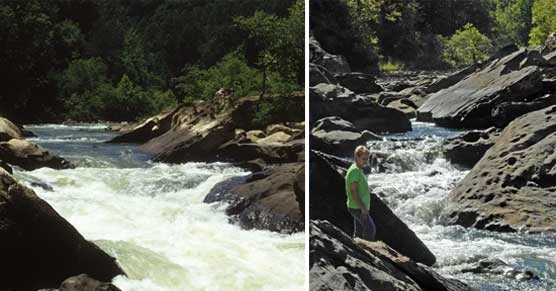
NPS While National Park Service units in Texas and the Midwest have experienced a year of record setting rainfall levels, parks in the Southeast Region have been forced to deal with the opposite extreme, a year of record setting drought. According to the National Drought Mitigation Center, much of the southeastern United States is currently suffering from drought levels classified as extreme to exceptional. As a result, late summer and early fall stream flow rates in southeastern parks have approached or exceeded historical lows. The Big South Fork National River and Recreation Area (NRRA) and the Obed Wild and Scenic River (WSR), two parks on the Cumberland Plateau in eastern Tennessee and southeastern Kentucky, are particularly susceptible to the effect of drought. Because of the low permeability of the sandstones and shales of the Cumberland Plateau the infiltration and retention of rainwater in thin soils and bedrock is very limited. During high rainfall, these conditions promote scouring floods and conversely, during the late summer and fall, when groundwater becomes an increasingly important component of stream flow, flow is often poorly sustained. At the U.S. Geological Survey New River gauge immediately upstream of the Big South Fork River, stream flow records indicate historical low flows of less than 1 cubic feet per second (cfs) during five different years since the gauge was established in 1934. In late September of this year, stream flow fell below 3 cfs at that gauge. Many aquatic species found in larger streams are able to adapt to stream flow depletion by seeking refuge in moist substrata or by migrating to pools, however the aquatic refuge in smaller streams is more limited. The effect of the drought on the less adaptable aquatic species such as freshwater mussels is being closely monitored by staff of Big South Fork NRRA, Obed WSR, and the Appalachian Highlands Inventory and Monitoring Network. Potential effects of drought, both now and in the future, are being worsened by the impoundment of tributaries to provide recreational waters for residential developments and for livestock and irrigation. In addition local public utilities also seek additional sources of water to supply the needs of a growing population. It seems the drought of 2007 will be “one for the ages.” |
Last updated: April 14, 2015
